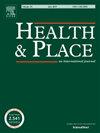Assessing the mental health impacts of Israeli occupation infrastructure in the West Bank by combining geospatial data with a representative survey of Palestinian youth
IF 3.8
2区 医学
Q1 PUBLIC, ENVIRONMENTAL & OCCUPATIONAL HEALTH
引用次数: 0
Abstract
Palestinian youth in the West Bank, occupied Palestinian territory (oPt) live in proximity to various forms of Israeli occupation infrastructure, such as checkpoints, road obstructions, a separation barrier, and Israeli settlements. We investigated the effect of proximity to such infrastructure on youth mental health and health risk behaviors by linking geospatial data on the locations of occupation infrastructure to geocoded survey data collected from a representative sample of Palestinian youth living in the West Bank. We estimated the relationship of youth mental health and proximity to each type of occupation infrastructure with controls for exposure to conflict-related violence and a range of demographic factors. We found that youth mental health is strongly negatively impacted by proximity to manned checkpoints (for males and females) and proximity to settlements (for females), and these impacts appear to be direct rather than mediated by conflict-related trauma exposure. The results indicate the importance of environmental aspects of the conflict for youth mental health, in addition to conflict-related violence itself.
求助全文
约1分钟内获得全文
求助全文
来源期刊

Health & Place
PUBLIC, ENVIRONMENTAL & OCCUPATIONAL HEALTH-
CiteScore
7.70
自引率
6.20%
发文量
176
审稿时长
29 days
期刊介绍:
he journal is an interdisciplinary journal dedicated to the study of all aspects of health and health care in which place or location matters.
 求助内容:
求助内容: 应助结果提醒方式:
应助结果提醒方式:


